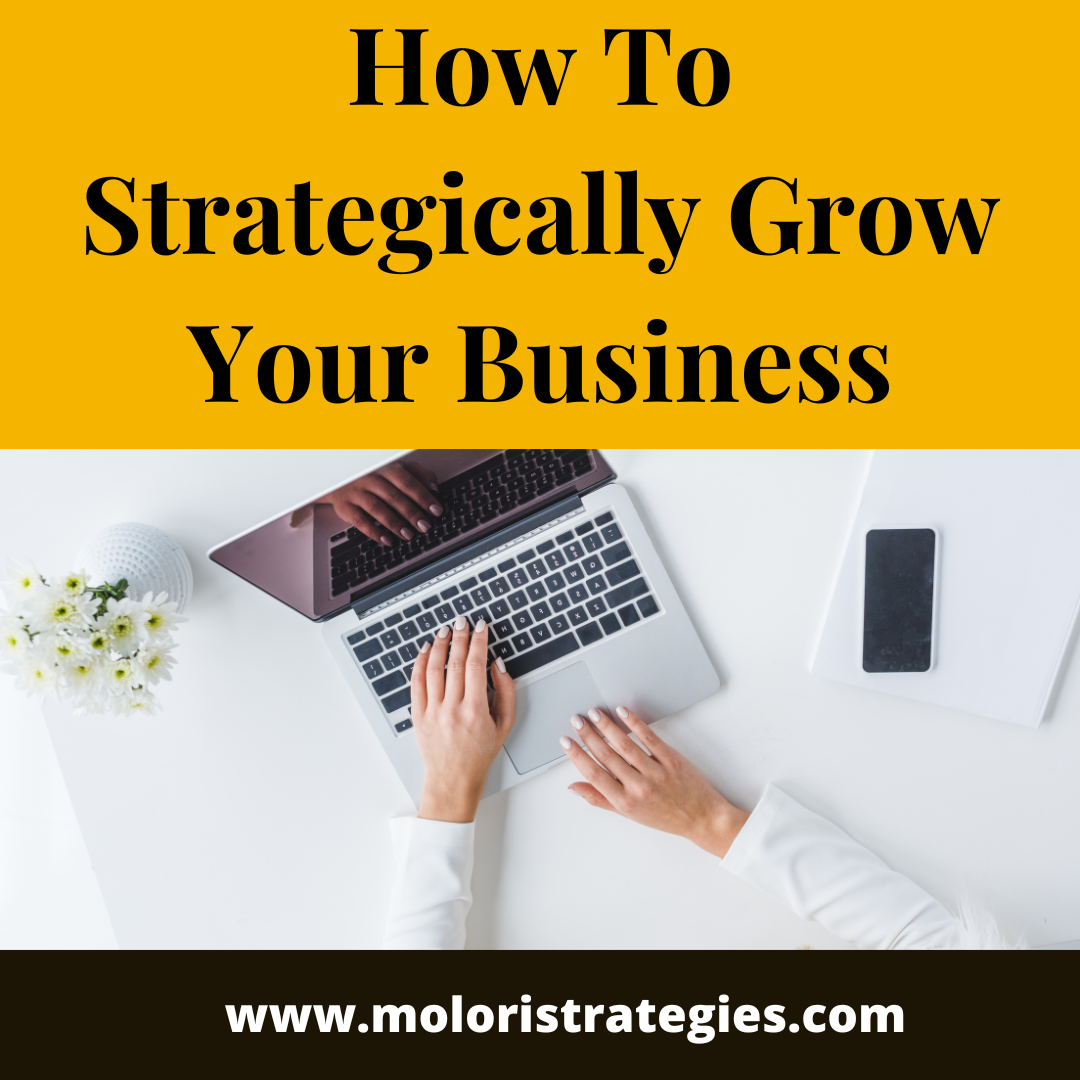
How To Strategically Grow Your Business With A Marketing Plan
The business landscape is forever changing and evolving, the good news is that if you have a solid marketing plan in place it will not only help build customer’s trust, but it will also serve as a key to unlocking consistent exponential growth for your business.
Having a well-crafted marketing plan acts as a roadmap that will guide your business toward its vision and goals. Effective marketing communication engages and retains customers for consistent business growth. In this article, we’ll explore the essential steps to strategically growing your business with a solid marketing plan.
Without a roadmap to help guide your vision, your business would feel like you’re swimming all alone in a big ocean lost at sea, or perhaps it would feel like you are walking in the desert and no one is aware of your existence despite the fact that you have a great service. But you can quickly turn things by asking a Growth Marketing expert to come in and create an effective Growth Marketing plan to propel your business growth.
Check out our previous article on the meaning of Growth Marketing, if you are not sure what this means, nonetheless, unlike traditional marketing, Growth Marketing is laser-focused on business growth. So you can be sure to get a return on investment when you have a growth expert by your side.
A Growth Marketing plan will give you a clear roadmap, which includes strategies to boost awareness, activities to focus on, and tools/resources you’ll need to promote your business so you can attract your ideal clients and increase sales.
Most business owners find it quite challenging and struggle with marketing their business, how much more growing the business the way they want.
But not to worry, Growth Marketing has been proven to work so well, no matter the industry you’re in, the core of a Growth Marketing plan addresses the entire customer journey and it is data-oriented, this will help you to identify where you need to focus on for sustainable long term business growth.
The Essential Steps for Strategic Business Growth through a Marketing Plan
1. Set Clear Objectives and KPIs
2. Study and Understand Your Target Audience
3. Create a SWOT Analysis and Know Your Competitors
4. Develop a Unique Value Proposition (UVP)
5. Choose the Right Marketing Channels
6. Create a Content Strategy (Micro and Marco)
7. Don’t Overlook Social Media
8. Implement Effective SEO Strategies
9. Monitor and Measure Your Results
10. Adapt and Evolve
11. Choose Wisely Where to Allocate Resources
12. Don’t Be Afraid To Seek Professional Help To Help Accelerate Your Business Growth
It is fundamental to understand each stage of the customer journey as this will help you identify, where you ought to focus on the most to grow your business.
The 6 Stages Of The Customer Journey Are The A3R3 Growth Funnel
- Awareness
- Acquisition
- Activation
- Retention
- Revenue
- Referral
So, for example, if you just started your business and no one knows about your services, then what you need to do in other to put your name out there would be to focus your attention on creating awareness, as soon as you feel that you have created much awareness, the next stage would be to shift your attention to generating leads that would lead to sales.
To have successful marketing you need a well-planned Marketing Strategy based on measurable goals and marketing actions that support growth. When writing a marketing plan, there are certain elements that must be included.
If you want to write a marketing plan but you’re not sure what to include, see below step-by-step Marketing Checklist to help you get started.
Click below to download.
DOWNLOAD MARKETING PLAN CHECKLISTWell, creating a marketing plan can be daunting, especially when things change all the time, it is important to stay on top of things, these changes include the way content is consumed, changes in social media algorithms, content distribution, and many more, therefore it is essential to always track and update your plan every now and then for it to stand the test of time.
A good Marketing Plan should have the following elements in it:
Executive Summary
Marketing plans could sometimes be really long, but you can still capture the whole essence in a quick summary and with the key points of every aspect of your plan, this part spells out details about your business. Once this aspect has been clearly stated, the next thing would be to define your ‘’why’’ and create your branding strategy.
Mission Statement
Your mission statement must include the purpose and vision of your business, as well as your brand values, make it concise with direct correlation to your business goals and objectives.
Market Analysis (SWOT) and Competitor Analysis
A thorough market analysis goes a long way to better position your brand in the marketplace. A good analysis will reveal potential profitable customer segments, market value, consumers buying patterns, your competition, changes in the market, and other factors.
Target Market and Ideal Client Avatar
When creating your plan, it is best not to waste time targeting everyone but instead narrow it down to a particular niche that you can fully serve, knowing who your ideal clients are, where they come from, and what might influence their buying decisions, will help you achieve a much better return on your investment.
You can achieve this by identifying the demographic, geographic and socio-economic, psychographic, pain points, challenges, motivations, fears, goals, and where they hang out on social media will help with marketing your business.
Marketing Objectives and KPIs
When setting your marketing objectives, consider using the S.M.A.R.T method to simplify the process of reaching your long-term goals, supported by informed data every step of the way, check out this previous article.
Break down your marketing objectives into smaller digestible forms, this will help you to clearly define your daily goals, weekly goals and easily track your progress.
Marketing Communication
To get your business out in the marketplace you need visibility to increase brand awareness and recognition in order to drive sales and revenue, so to effectively do this, you need to have a plan to build your brand awareness by using messages that attract your target market.
The Marketing Communication must be thoughtfully crafted around your brand positioning and distributed through channels of your choice, incorporating paid or organic marketing. You can get a lot of benefits that pay overtime when organic marketing is done correctly.
The most common tactics of Marketing Communication include: using social media platforms, Web page content, Blogging, video marketing, SEO, direct email marketing, articles, and many more. It also helps and makes things easier when a well-planned content calendar and automation tools are used to publish content consistently to your targeted audience.
Growth Marketing Strategy
Define your North Star metric which will help you prioritize, communicate, and focus on the impact to ensure business success.
According to Sean Ellis, your North Star Metric should be the single metric that best captures the core value that your product or service delivers to clients. Optimizing your efforts to grow this metric is key to driving sustainable growth across your full customer base.
Examples (Fast delivery, Number of Nights Booked, Number of Appointments Booked, Number of Clients Appointments Booked, number of messages a user sends etc)
Be careful not to focus on vanity metrics for your North Star Metric.
Here are some examples of Vanity Metrics according to amplitude:
Daily Active Users, Ad Impressions, Number of Downloads, Page Views, Registered Users, Story Points Delivered, Time on Page, Marketing channels.
Sales Process
Setting up your sales process is important, as it guides you on the steps to take a prospective client through from the awareness stage to when the sale is closed.
A typical sales cycle consists of 6 steps: Prospecting, Approach, Presentation, Objection management, Sales closing, and Follow-up.
Having the right roadmap guides and prevents you from underperforming, in addition, you can propel your growth by creating a great referral system and tools for existing clients, so when they refer a client they get some kind of discount or whatever incentive you decide to choose.
Website
One thing that is very important in any business is making your presence felt around the world not just locally and being in front of your potential clients, so setting up a website where people can find you and go through the conversion process can be very beneficial.
It is a useful tool for communicating your business goals to your online audience in order to build and grow. If you can create one yourself or you can easily hire someone to design one for you.
Your website is the most powerful communication and marketing tool to help grow your business, you can use it to blog and create lead magnets to attract ideal clients. You can run a business without a website no doubt but you would be restricting yourself from generating more sales.
Get the Marketing Plan Checklist
When you successfully spend time writing and completing a marketing plan, it will guide you to drive your business along a clear and controlled path for growth when you stick to it. Having a great marketing plan is by far the best decision you would ever make to achieve your business goals. You can always adapt the plan as your business evolves over time to fit your needs.
So, what are you waiting for? Get your business out there, do what you need to do, and put together your marketing plan today. If you need help putting one together, get in touch today, the first 30 minutes consultation is completely FREE

Recent Comments